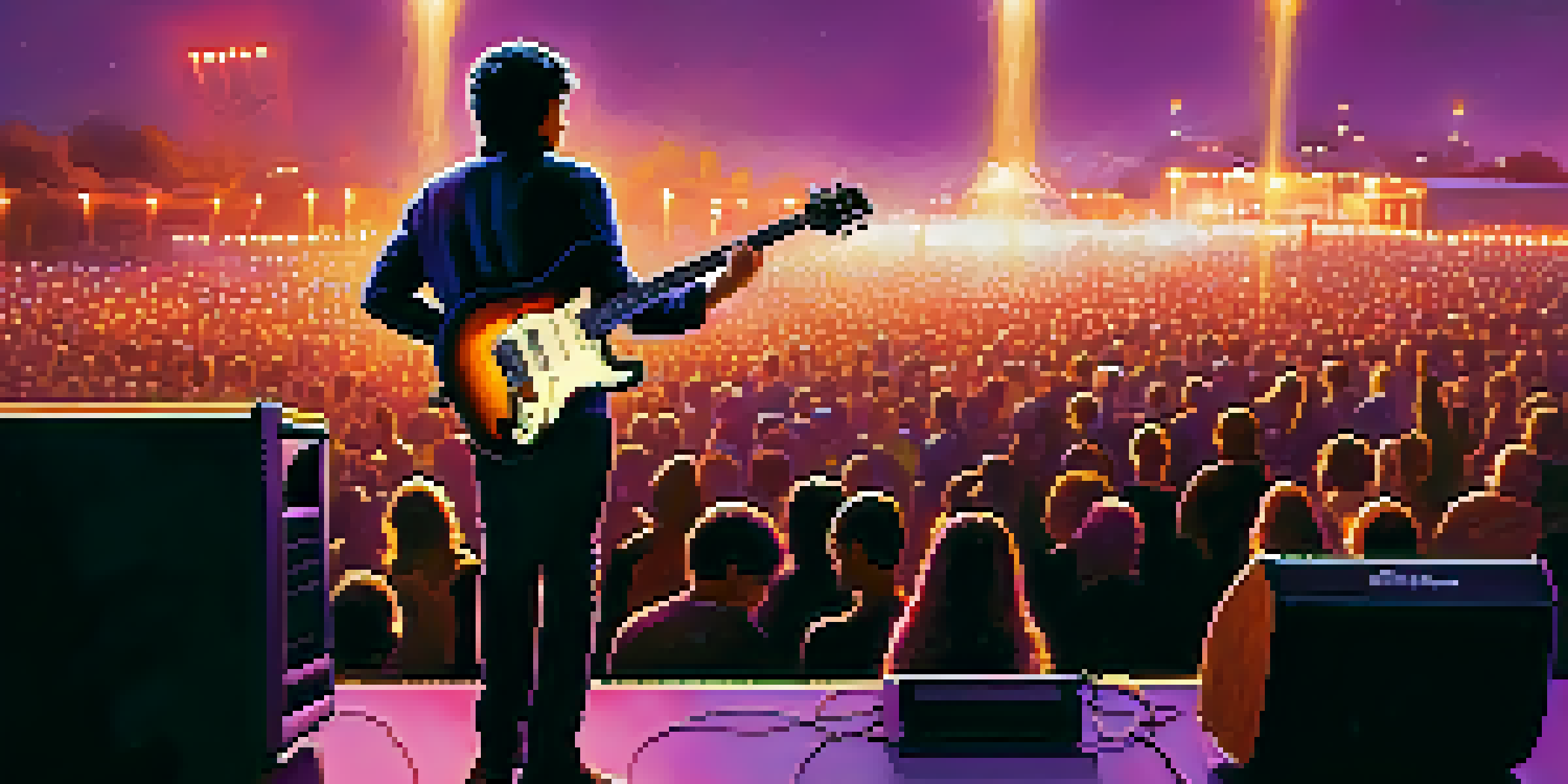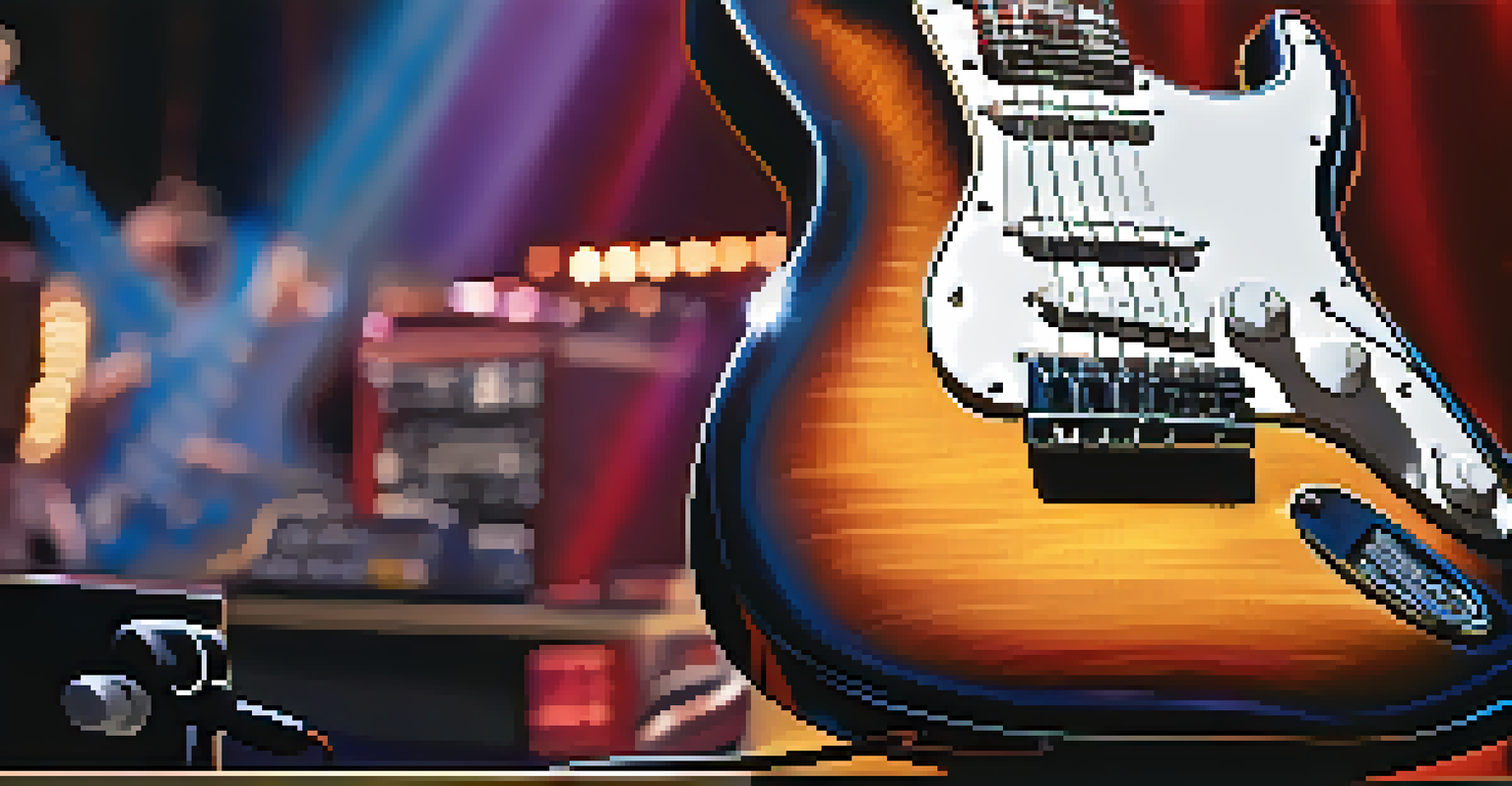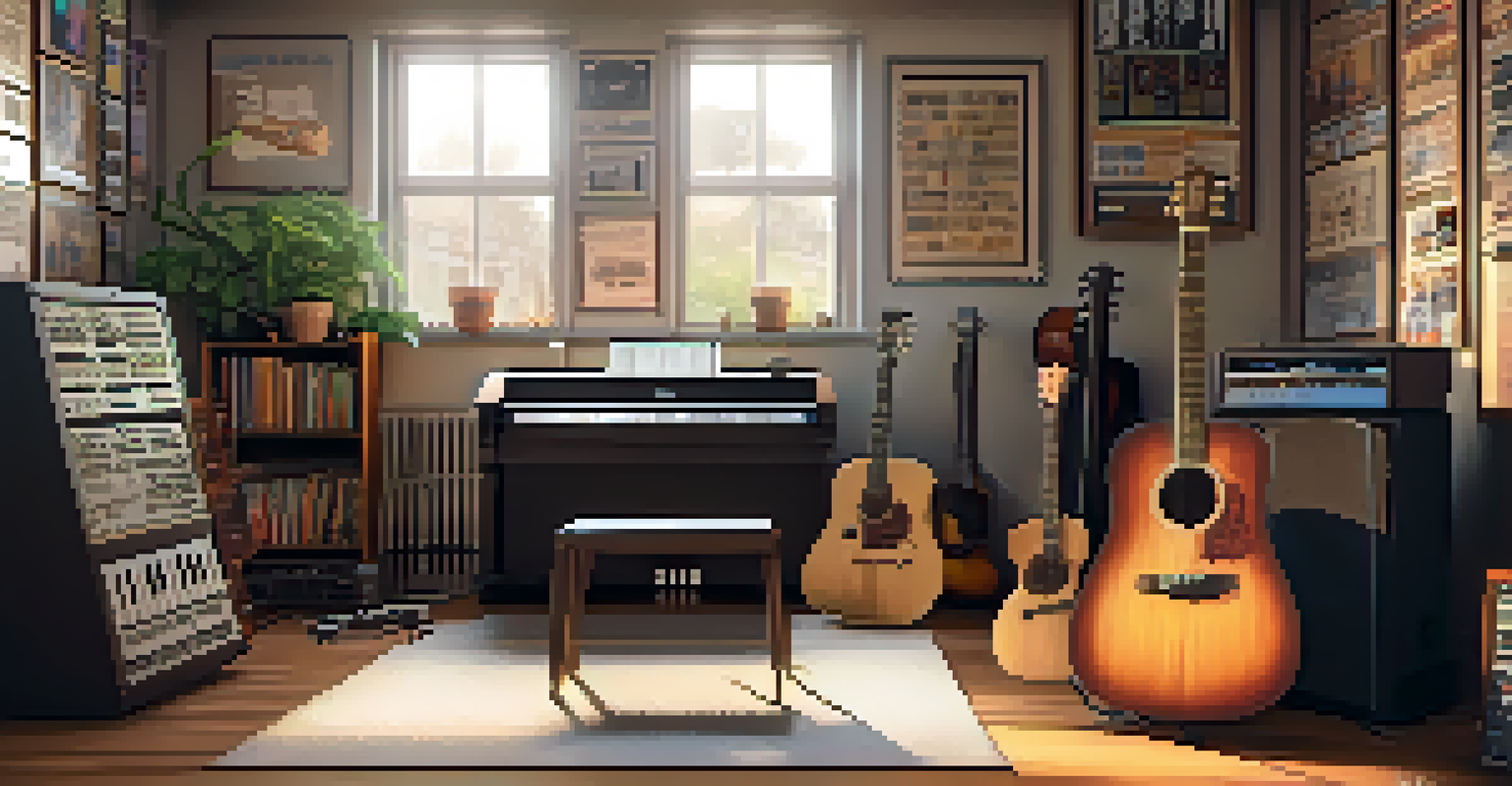Balancing Sound: EQ Techniques for Live Guitar Performances

Understanding EQ: A Guitarist's Best Friend
Equalization, or EQ, is a powerful tool that shapes the sound of your guitar. It allows you to enhance certain frequencies while cutting others, helping your instrument sit well in the mix. Think of it like seasoning in cooking; too much or too little can drastically change the flavor of your dish, or in this case, your sound.
The right kind of music can make a tremendous difference in how you feel. It’s like a warm hug for the soul.
When performing live, it's crucial to understand the frequency range of your guitar. The fundamental frequencies typically range from 80 Hz to 1 kHz for electric guitars. Knowing this helps you make informed decisions about which frequencies to boost or cut for clarity and presence.
In essence, EQ is about finding the right balance. By adjusting the frequencies, you can enhance your guitar's tone, making it more pleasing to the audience and ensuring it stands out without overwhelming other instruments.
Identifying Frequency Ranges for Guitar
Guitars have specific frequency ranges that contribute to their overall sound. The low end usually falls between 80 Hz to 300 Hz, which gives the guitar its body and warmth. Meanwhile, the midrange (300 Hz to 3 kHz) is where the character of the guitar truly shines, making it essential for cutting through a mix.

The high frequencies, from 3 kHz to 8 kHz, add brightness and clarity. However, too much boost in this range can lead to harshness, so it’s important to find a balance. By understanding which frequencies correspond to different aspects of your guitar tone, you can make better EQ decisions.
Understanding EQ's Role in Sound
EQ helps shape your guitar's sound by enhancing certain frequencies and cutting others for a balanced tone.
To identify these ranges during a live performance, consider using a frequency chart or an analyzer. This visual aid can help you pinpoint areas that may need adjustment, ensuring your guitar tone is both rich and defined.
Cutting vs. Boosting: When to Use Each Technique
One of the fundamental principles of EQ is knowing when to cut and when to boost frequencies. Generally, it's advisable to cut problematic frequencies rather than boost others. This approach creates a cleaner mix and prevents muddiness in your sound.
Good music doesn't have an expiration date.
For example, if your guitar sounds too boomy, a gentle cut around 200 Hz can help tighten up the low end. Conversely, if you feel your guitar lacks presence, a slight boost around 2 kHz can help it cut through the mix without overwhelming the overall sound.
Remember, subtlety is key in EQ adjustments. Small changes can lead to significant improvements, so always trust your ears and make adjustments gradually to avoid drastic shifts in tone.
Using EQ in Different Live Environments
Every live performance environment is unique, which means your EQ settings should adapt accordingly. A small, intimate venue may require different EQ adjustments than a large outdoor festival. Factors such as room acoustics, audience size, and stage setup all play a role in how your guitar sounds.
For instance, in a smaller venue, you might notice more natural reverb and resonance that can enhance your guitar's tone. In contrast, in larger spaces, excessive low frequencies can muddy the sound, making it necessary to cut more in that range.
Adapting EQ for Live Environments
Different live settings require tailored EQ adjustments to achieve the best sound, considering factors like acoustics and audience size.
Being flexible and adjusting your EQ settings based on the environment will ensure you deliver the best sound possible, no matter where you perform. Always take a moment to listen and tweak your settings before going live.
Leveraging a Soundcheck for Optimal EQ Settings
Soundchecks are invaluable for achieving the best guitar sound possible in a live setting. During this time, you have the opportunity to experiment with your EQ settings while hearing how they interact with the overall mix. Take advantage of this crucial period to fine-tune your sound.
Start by playing your guitar at the same volume you will during the performance. This will help you gauge how your EQ adjustments will translate in real-time. Don't hesitate to ask for feedback from sound engineers or bandmates—they can offer a fresh perspective on your tone.
Ultimately, a thorough soundcheck allows you to make necessary adjustments, ensuring that your guitar shines through the mix and captivates your audience from the very first note.
Collaborating with Sound Engineers for Better Results
A solid partnership with your sound engineer can greatly enhance your live guitar performance. These professionals have a wealth of experience and knowledge about how to balance sound effectively. By working together, you can achieve a polished and cohesive sound that resonates with the audience.
Before the show, communicate your desired tone and any specific EQ adjustments you have in mind. This will help the sound engineer understand your vision and make informed choices during the performance. Remember, they want you to sound great just as much as you do!
Collaboration Enhances Performance
Working closely with a sound engineer can significantly improve your guitar's sound, ensuring it resonates well with the audience.
Collaboration doesn’t stop at the soundcheck. During the performance, stay open to suggestions and adjustments from your sound engineer. Their expertise can help elevate your guitar sound, ensuring you deliver a memorable experience for your audience.
Practicing EQ Techniques for Live Performance Confidence
Like any skill, mastering EQ techniques requires practice. Spend time experimenting with different EQ settings in various environments. Record yourself playing with different adjustments and listen back to understand how each change impacts your overall sound.
Additionally, consider setting up practice sessions with a friend or fellow musician. This collaboration can provide valuable feedback and help you refine your approach to EQ. Having someone else's perspective can often reveal aspects you might overlook.

Ultimately, the more you practice and experiment with EQ, the more confident you will become during live performances. This confidence will reflect in your playing, allowing you to focus on delivering an unforgettable experience for your audience.